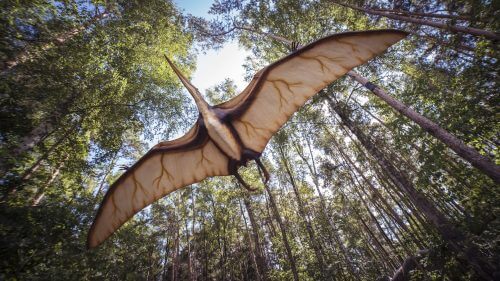Researchers from Tel Aviv University confirmed a hypothesis from the 30s: the ancient mammals adapted to nocturnal activity to avoid encountering the dinosaurs, and began to switch to diurnal activity very shortly after their disappearance

A new study at Tel Aviv University confirms for the first time a hypothesis that was put forward in the 30s: the ancient mammals survived the age of the dinosaurs by limiting themselves to nocturnal activity, and began to switch to daytime activity only after the extinction of the dinosaurs, 66 million years ago. The study, which used complex algorithms to reconstruct the ancient activity patterns of the mammals, revealed that daytime activity began to appear among them about 200,000 years after the disappearance of the dinosaurs - literally in the blink of an eye from an evolutionary point of view.
The research was carried out by PhD student Roi Maor and Prof. Tamar Dayan from the School of Zoology and the Steinhardt Museum of Nature at Tel Aviv University, as part of Maor's doctoral thesis, in collaboration with scientists from University College London (UCL).
The article was published on Monday (6.11) in the journal Nature Ecology and Evolution.
"Scientists have been asking for many years how the mammals survived in the era when the dinosaurs ruled the world - for 150 million years," explains Prof. Dayan, chairman of the Steinhardt Natural History Museum. "The mammals were then small and diverse, and inferior in every competition against the dinosaurs. One hypothesis is that the ancient mammals adapted themselves to nocturnal activity, while the dinosaurs, as reptiles that need sunlight to warm up and live, were active during the day. Thus the mammals could exist in the same geographical area where the dinosaurs lived, yet in a completely different ecological niche - the nocturnal environment. This hypothesis is based, among other things, on the fact that to this day the great majority of mammals are nocturnal. In fact, monkeys, which include humans, are the only mammals whose sense of sight is distinctly adapted to daylight."
To test the hypothesis, the researchers sought to find out exactly when daily activity first appeared among mammals, and if this had any connection to the disappearance of the dinosaurs. "We took the activity patterns (day/night/mixed) of 2,415 mammal species, and with the help of statistical algorithms we calculated the activity patterns of each of the ancestors of those species - up to the ancestor of all mammals alive today," says Roi Maor. "In the research, we considered all types of mammals: placental mammals, which are the majority of mammals around us, marsupial mammals such as the kangaroo, and bib mammals such as the duck, which lay eggs and after hatching nurse the young."

The calculations showed that the ancestor of mammals was, as expected, nocturnal, as were the early mammals that followed. The real discovery is what happened next: it was found that partial diurnal activity appeared among mammals only about 200,000 years after the extinction of the dinosaurs. "This exact finding is nothing short of amazing," says Maor. "We tested it with three different statistical methods, but the results remain the same. In evolutionary terms, this is an immediate change, and it seems that the connection between the disappearance of the dinosaurs and the appearance of daily activity in mammals is very close. In the beginning, mammals appeared that were active both during the day and at night, and later on, distinct diurnal operators also developed - among which the ancestor of the monkeys stands out."
"This study is the first to present unequivocal evidence that diurnal mammals appeared only after the disappearance of the dinosaurs," concludes Prof. Dayan. "The possibility to operate during the day is probably one of the reasons for the prosperity of the mammals after the removal of the rule of the dinosaurs, and for the accelerated development of a wide variety of mammals from then until today. In addition, the research indicates that the distribution of activity times, similar to the distribution of other resources in nature, allows for a stable coexistence between different species."
See more on the subject on the science website:

2 תגובות
A statistical study that gives results in the distant past from millions of years ago? And for time spans of 200,000 years within those times? Do we have any deviation within a given species by which we can throw back? It is very strange and no wonder that the article did not give specific examples of the statistical forecasting method.
"With the help of statistical algorithms, we calculated the activity patterns." It's really not clear what they did.
Being that "this study is the first to present unequivocal evidence" but no evidence for this in the article...